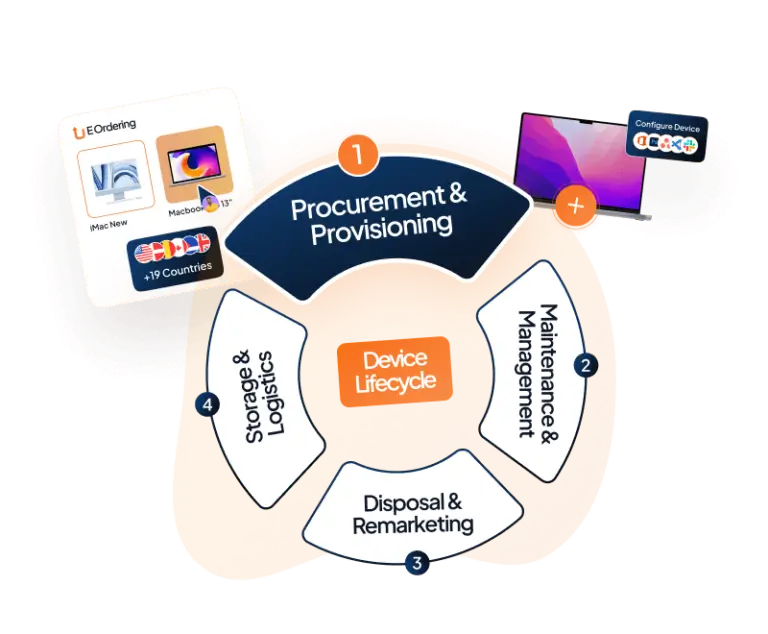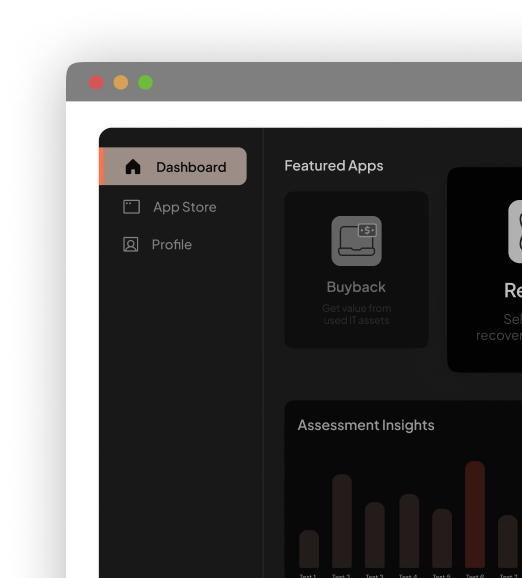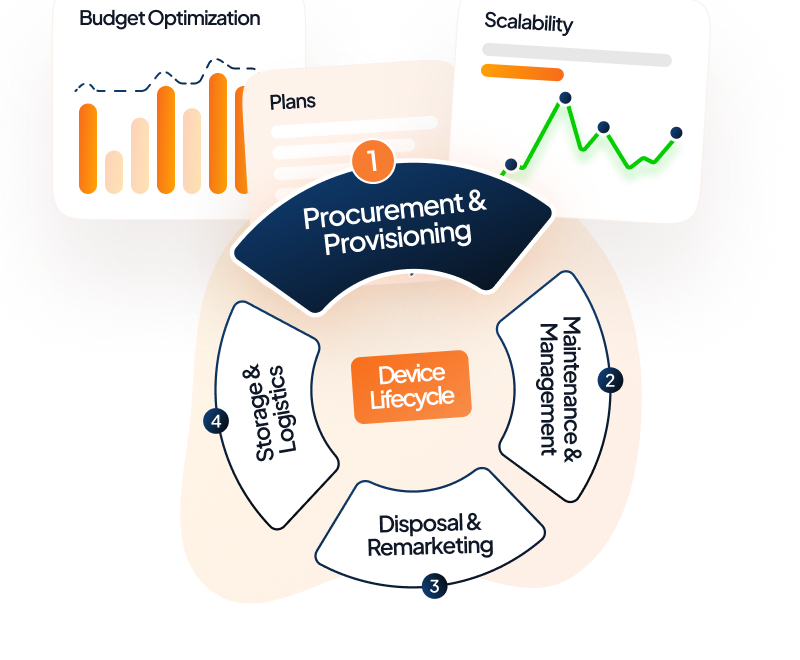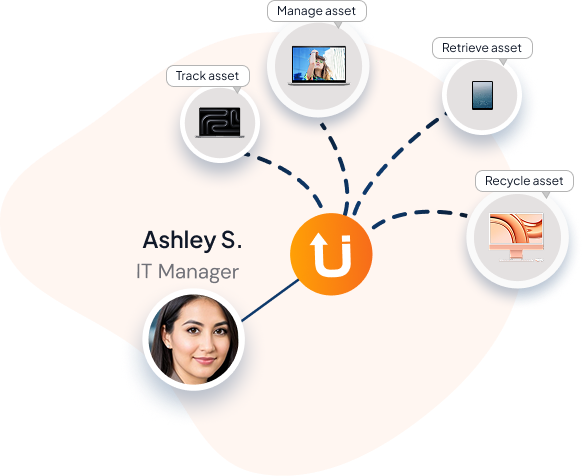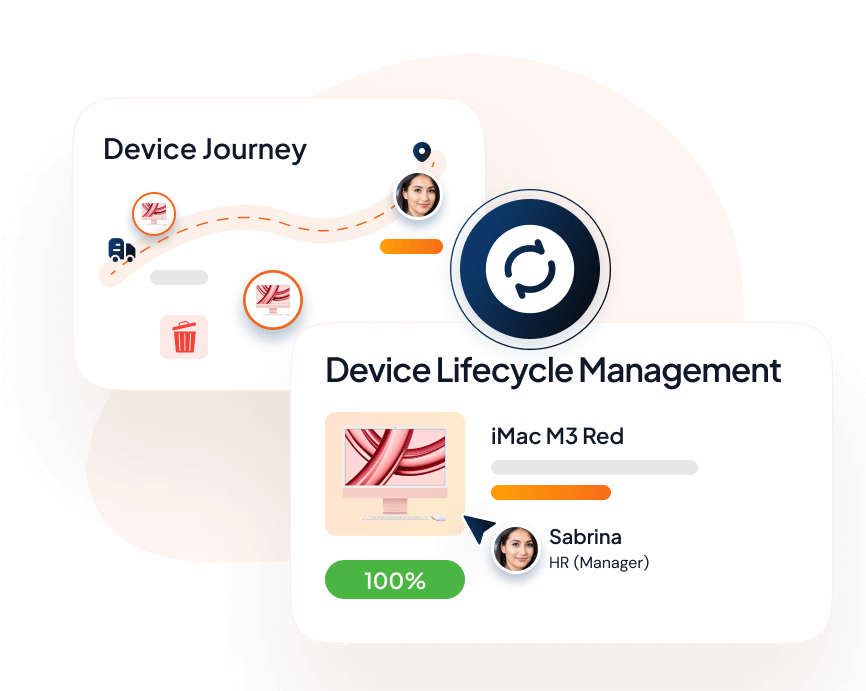In this technological era hardware and software have become the new pen and paper, an essential tools for success. Global IT procurement services help businesses easily source and manage tech equipment while cutting costs and improving speed. With the market expected to grow 11.1% from 2023 to 2030, it’s a smart move for companies going digital. In this guide, we’ll dive into steps that businesses can take to steer clear of such losses and maximize their procurement efficiency.
TLDR;
- IT procurement ensures efficient acquisition of technology tools for smooth business operations.
- Modern procurement software saves 32M+ hours annually, boosting productivity.
- Smart procurement tech cuts $1.5B+ in inefficiencies for North American businesses.
- Real-time insights reduce rogue spend and ensure compliance in IT procurement.
- Strong supplier relationships secure better deals and reliable support.
- Sustainable procurement saves costs and enhances brand reputation.
- Unduit automates procurement with transparency and optimized IT asset management.
What is IT procurement?
When you think of IT procurement, imagine it as the shopping trip your company needs to take to get the right technology tools. It’s all about finding, buying, and managing the tech stuff your business needs to run smoothly.
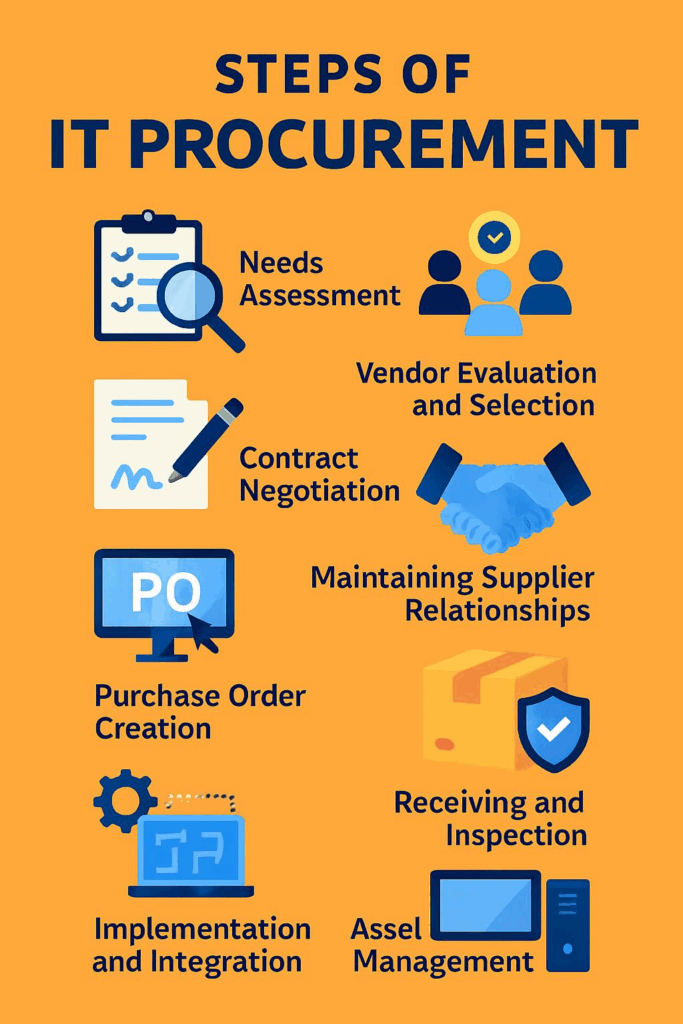
IT Procurement process involves various stages also referred to as procurement lifecycle, including:
- Needs Assessment: Determining the technology needs of the organization, including hardware, software, and services.
- Vendor Evaluation and Selection: Researching and evaluating potential vendors or suppliers to find the best fit for the organization’s requirements regarding cost, quality, reliability, and support.
- Contract Negotiation: Negotiating terms and conditions, including pricing, delivery schedules, service level agreements (SLAs), and warranties.
- Maintaining supplier relationship: Building a strong supplier relationship is crucial for ensuring a smooth, reliable, and efficient procurement procedure.
- Purchase Order Creation: Issuing a formal order to the selected vendor to supply the required IT products or services – the whole purchasing process.
- Receiving and Inspection: Ensuring the received products or services meet the specified requirements and quality standards.
- Implementation and Integration: Deploying and integrating the new IT assets into the existing infrastructure.
- Asset Management: Tracking and managing the lifecycle of the IT assets, including maintenance, upgrades, and eventual disposal is all a part of asset management.
Benefits of IT Procurement
- Cut Waste and Reclaim Productivity
Outdated procurement tools waste over 32 million hours yearly, modern IT procurement software helps global teams get that time back. - Drive Real Cost Savings, Not Just Spend Control
Inefficient systems cost North American businesses $1.5B+ annually, smart procurement tech turns spending into savings. - Make Smarter Decisions with Real-Time Visibility
Get clear, real-time insights into global purchases and vendors to improve decisions, reduce rogue spend, and stay compliant. - Empower Global Teams with Easy-to-Use Tools
78% of professionals say simpler tools would help employees find better deals, intuitive software means fewer clicks, better choices. - Strengthen Supplier Relationships Across Borders
Track vendor performance and streamline communication to build stronger partnerships, no matter where your teams operate.
Procurement Best Practices
- Strategic Sourcing. Dive deep into market research to find the best suppliers for your IT needs. Understand your supply chain to secure top-notch hardware and software at competitive prices.
- Build Strong Supplier Relationships. Foster long-term partnerships with your IT vendors. Good relationships can lead to better deals, higher-quality products, and reliable support.
- Leverage Technology. Utilize e-procurement tools and software to automate purchasing, track expenses, and streamline workflows. This saves time, reduces errors, and boosts efficiency.
- Focus on Total Cost of Ownership (TCO). Look beyond the initial purchase price. Consider maintenance, operation, and disposal costs to understand the true value of IT assets over their lifecycle.
- Implement Clear Policies and Procedures. Establish consistent procurement policies and ensure everyone in your organization understands them. This helps maintain transparency and accountability.
Digital procurement platforms
A digital procurement platform is a cloud-based software solution designed for procurement automation. It helps organizations manage their spending, supply chain management, and supplier relationships more efficiently and effectively. By using a digital procurement platform, businesses can automate purchasing tasks, track orders, and expenses, ensure compliance with procurement policy, and gain insights into procurement data to make informed decisions. This results in improved efficiency, cost savings, and better supplier management.
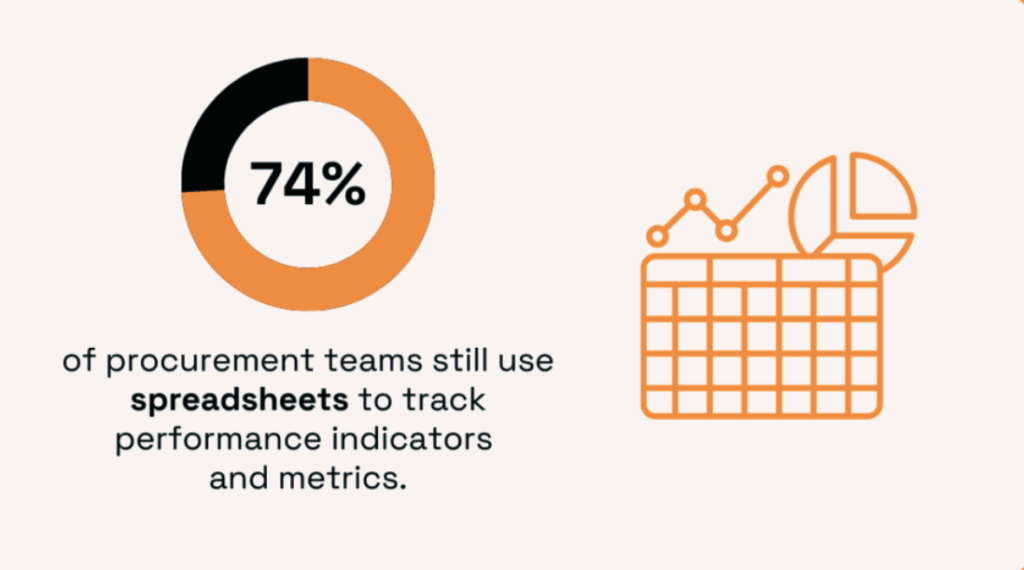
If you are not a fan of manual processes procurement software is the way to go for your business. It enhances transparency and gives you insight into real-time data so you can manage your procurement spending better. A 2020 Business Chief survey revealed inefficient procurement procedures are costing businesses in the US around $1.5B annually, so it’s a smart move for companies going digital
Key Features of Digital Procurement Platforms
Digital procurement platforms are game-changers for businesses, simplifying and streamlining the procurement process. Here are some essential features to look for:
1. Automated Workflows
Digital platforms automate the requisition and approval process with customizable workflows and notifications. This eliminates the need for manual follow-ups and paperwork, ensuring smooth and timely approvals.
2. Purchase Order Management
Create and manage purchase orders effortlessly. Track order status in real-time and automate invoice processing to keep everything organized and up to date.
3. Catalog Management
Maintain electronic catalogs of goods and services, complete with pricing and product information. This makes it easy to find and select the items you need, ensuring consistency and accuracy.
4. Supplier Management
Create and manage supplier profiles, track performance, and automate onboarding and offboarding processes. This helps maintain strong supplier relationships and ensures you are working with reliable partners.
5. Spend Analytics
Generate detailed reports on spending, suppliers, and categories. Use these insights to identify areas for cost savings and efficiency improvements, ultimately boosting your bottom line.
Suppose you want to explore a cloud-based solution to help you automate your manual processes to boost your procurement professionals’ efficiency. In that case, you might want to explore our digital procurement software, At Unduit. We have a team of experts who can walk you through our tool.
Click here to see it in action →Types of Procurement in Tech
Why Does Every Company Need an IT Procurement Manager?
In the fast-paced business world, getting the right tech at the best time and price is crucial. Enter the IT procurement manager, a key player in making this happen. But what exactly do they do, and why are they so important? Let’s dive in.
Unlock seamless IT asset management with Unduit.
Discover how our platform automates the entire IT asset lifecycle, from procurement to disposal.
Book a Demo!What is Procurement Management?
Think of procurement management as shopping for everything a company needs for operational efficiency. This involves planning what to buy, finding the best suppliers, negotiating deals, making purchases, and ensuring everything arrives on time and meets quality standards. Effective procurement management is all about ensuring the company gets the best value for its money.
- Smart Planning: An IT procurement manager is like a strategic wizard. They figure out what tech the company needs, when to get it, and from whom. This ensures smart decisions and maximum value.
- Supplier Relationship Management: They’re the matchmakers of your supplier world. Procurement managers find great suppliers, negotiate deals, and ensure top-notch products and services. This means better deals and reliable service.
- Data management: They are also responsible for managing procurement data including information regarding the procurement cycle, supplier information, keeping an eye out for other potential suppliers, and other procurement activities. Sometimes they are also responsible for inventory management.
- Efficient Purchasing: They handle the nitty-gritty of buying tech, from creating orders to tracking deliveries and managing invoices. No fuss, no headaches, just smooth operations. and other procurement activities. Sometimes they are also responsible for inventory management.
- Cost Saving: They’re all about saving money smartly. By managing budgets and finding cost-effective solutions, they boost the bottom line without compromising quality.
The Role of an IT Procurement Manager
- Risk Management: They spot potential risks like supply chain issues and have plans to tackle them. This proactive approach avoids costly surprises.
- Performance Tracking: They keep an eye on supplier performance to maintain quality standards. If there’s a hiccup, they fix it fast.
- Contract Management: It a process of overseeing and managing contracts to ensure they are properly executed and fulfill their intended purpose
- Team Leadership: They lead the procurement team, ensuring everything runs efficiently and effectively.
- Strategic Sourcing: Strategic sourcing is like the secret sauce of procurement, the procurement managers focus on getting the most value from your supplier relationship. It goes beyond simply buying goods and services. It’s about building long-term partnerships that benefit both parties.
Embracing Sustainable Tech Procurement
Sustainable procurement in technology is about making smart, eco-friendly choices. Here’s a quick look at what it involves:
- Eco-Friendly Choices: Choose energy-efficient, recyclable tech that lasts longer.
- Fair Labor Practices: Support companies that ensure fair wages and safe working conditions.
- Cost-Effective: Consider the total cost, including maintenance and disposal, not just the initial price.
- Ethical Partners: Work with vendors committed to reducing their carbon footprint and sourcing responsibly.
- Lifecycle Thinking: Focus on sustainability from design to disposal.
- Regulatory Compliance: Adhere to environmental and labor regulations.
- Innovation: Promote new, sustainable tech solutions.
Sustainable procurement means better tech choices for a healthier planet and society. It’s a smart move for businesses, too—saving money and boosting reputation. So, next time you buy tech, think green!
Try Unduit for Free
Experience end-to-end IT asset lifecycle management. From global procurement to recovery, all from a single, affordable dashboard.
IT Procurement FAQs
How is IT procurement different from general procurement?
IT procurement focuses specifically on acquiring technology-related products and services, which often involve complex technical specifications, integration with existing systems, and rapid technological changes. General procurement, on the other hand, covers a broader range of goods and services that a business might need, such as office supplies, furniture, or raw materials. IT procurement requires specialized knowledge of technology trends, vendor capabilities, and IT asset management.
What are the key stages of the IT procurement process?
The IT procurement process typically involves several stages:
- Needs Assessment: Determining the specific technology needs of the organization.
- Vendor Evaluation and Selection: Researching and choosing vendors that meet quality, cost, and reliability criteria.
- Contract Negotiation: Finalizing terms, conditions, pricing, and service agreements.
- Maintaining Supplier Relationships: Ensuring ongoing communication and collaboration with vendors.
- Purchase Order Creation: Issuing formal orders for the required IT products or services.
- Receiving and Inspection: Verifying that the delivered items meet the specified requirements and standards.
- Implementation and Integration: Deploying and integrating new IT assets into the existing infrastructure.
- Asset Management: Tracking and managing the lifecycle of IT assets, including maintenance, upgrades, and disposal.
What are the key features of digital procurement platforms?
Essential features of digital procurement platforms include:
- Automated Workflows: Streamline requisition and approval processes.
- Purchase Order Management: Track and manage orders and invoices.
- Catalog Management: Maintain electronic catalogs of goods and services.
- Supplier Management: Manage supplier profiles and performance.
- Spend Analytics: Generate detailed reports to identify cost-saving opportunities.
What are the types of procurement in technology?
The main types of procurement in technology are:
- Direct Procurement: Acquiring raw materials and components directly used in production.
- Indirect Procurement: Purchasing goods and services that support daily operations but are not directly involved in production.
- Goods Procurement: Buying tangible products like hardware and equipment.
- Services Procurement: Contracting external services such as consulting, IT support, and maintenance.
What is procurement management?
Procurement management involves planning, negotiating, and overseeing the acquisition of goods and services necessary for business operations. It ensures that purchases provide the best value for money while meeting quality and delivery standards, contributing to the overall efficiency and success of the organization.
How can businesses benefit from sustainable procurement?
Sustainable procurement offers several benefits:
- Cost Savings: Reducing total lifecycle costs through energy-efficient and durable technology.
- Enhanced Reputation: Demonstrating a commitment to social and environmental responsibility.
- Regulatory Compliance: Meeting legal and regulatory requirements.
- Innovation: Encouraging the development of sustainable technologies.
- Healthier Planet: Reducing the carbon footprint and environmental impact.
- Social Responsibility: Supporting fair labor practices and ethical sourcing.
What are the different sourcing strategies in IT procurement?
There are several sourcing strategies in IT procurement, including:
- Single Sourcing: Procuring from one supplier to build a strong relationship and secure better terms.
- Multiple Sourcing: Using multiple suppliers to mitigate risk and increase competition.
- Global Sourcing: Procuring from international suppliers to access a broader range of products and services.
- Local Sourcing: Focusing on local suppliers to support the local economy and reduce lead times.
- Outsourcing: Contracting external vendors to handle specific IT functions or projects.
- Insourcing: Handling IT procurement internally to maintain control and consistency.
What are the risks associated with IT procurement?
Common risks in IT procurement include:
- Vendor Lock-In: Becoming overly dependent on a single supplier.
- Quality Issues: Receiving substandard products or services.
- Supply Chain Disruptions: Facing delays or shortages due to supplier issues.
- Cost Overruns: Exceeding budget due to unexpected expenses.
- Compliance Risks: Failing to meet regulatory or contractual obligations.
- Technology Obsolescence: Acquiring technology that quickly becomes outdated.
What is the importance of vendor management in IT procurement?
Vendor management is critical in IT procurement for several reasons:
- Quality Assurance: Ensuring suppliers meet quality standards.
- Cost Control: Negotiating favorable terms and pricing.
- Risk Mitigation: Identifying and managing supplier-related risks.
- Performance Monitoring: Tracking and evaluating supplier performance.
- Relationship Building: Developing strong, collaborative relationships with key suppliers.
- Innovation: Encouraging suppliers to innovate and offer new solutions.
